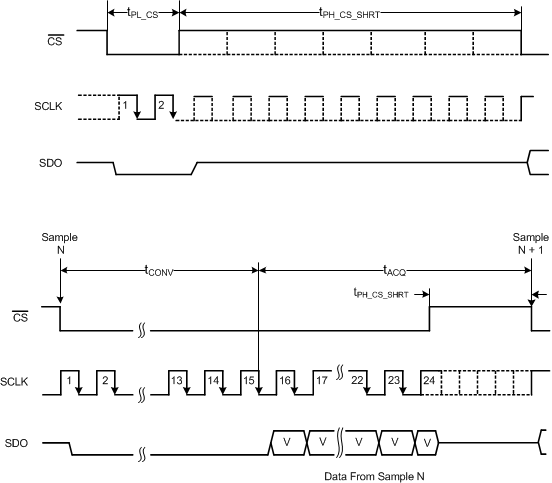ZHCSJ89B January 2019 – July 2022 ADS8353-Q1
PRODUCTION DATA
- 1特性
- 2应用
- 3说明
- 4Revision History
- 5Pin Configuration and Functions
- 6Specifications
- 7Detailed Description
- 8Application and Implementation
- 9Device and Documentation Support
7.5.5 Frame Abort, Reconversion, or Short-Cycling
As shown in Figure 7-12, the minimum number of SCLK falling edges (N) that must be provided between the beginning and end of the frame depends on the serial interface mode. The SCLK falling edges (N) program the device and retrieve the conversion result. If CS is brought high before the expected number of SCLK falling edges are provided, the current frame is aborted and the device starts sampling the new analog input signal.
If frame (F) is aborted, then the register write operation attempted in frame (F) is considered invalid and the internal registers are not updated. The device continues to have the same configuration in frame (F+1) from frame (F).
The output data bits latched before the CS rising edge are still valid data that correspond to sample N.
 Figure 7-12 Frame Abort, Reconversion, or Short-Cycling Feature
Figure 7-12 Frame Abort, Reconversion, or Short-Cycling FeatureSee the Section 6.6 table for timing specifications for this operating mode.